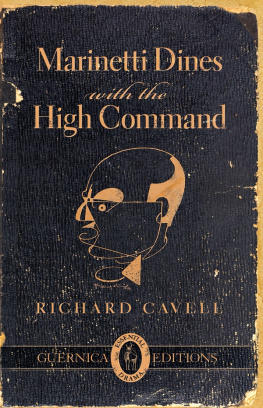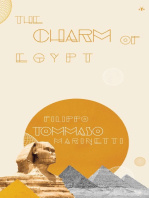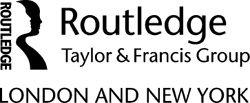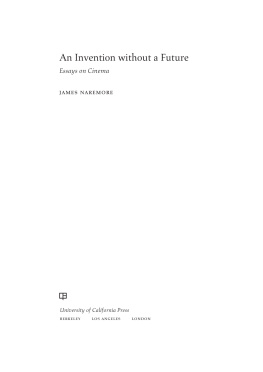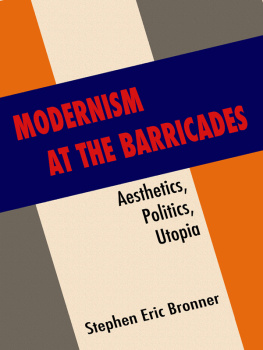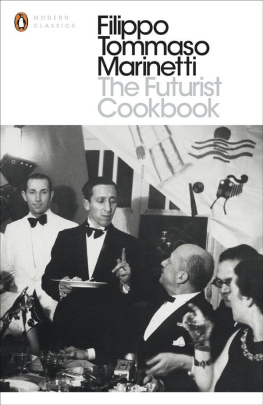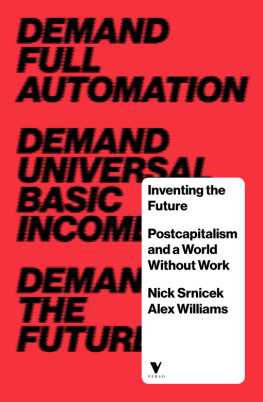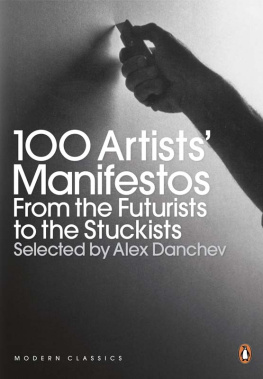
Marinetti Dines
with the
High Command
A MANIFESTO AND FIVE AEROPOEMS

With An Afterword
Marinetti and the Invention of the Future
RICHARD CAVELL
GUERNICA ESSENTIAL DRAMA SERIES 35
TORONTO BUFFALO BERKELEY LANCASTER (U.K.)
2014
Copyright 2014 Richard Cavell and Guernica Editions Inc.
All rights reserved. The use of any part of this publication, reproduced, transmitted in any form or by any means, electronic, mechanical, photocopying, recording or otherwise stored in a retrieval system, without the prior consent of the publisher is an infringement of the copyright law.
The poem-in-liberty, Une assemble tumultueuse (sensibilit numrique),translated by Elizabeth R. Napier and Barbara R. Studholme, in F.T. Marinettis Selected Poems and Related Prose, selected by Luce Marinetti (New Haven, 2002), pp. 122-3, is reprinted by permission of Yale University.
Press Performance inquiries should be directed to the author: r.cavell@ubc.ca
Michael Mirolla, general editor
David Moratto, interior designer
Guernica Editions Inc.
2250 Military Road, Tonawanda, N.Y. 14150-6000 U.S.A.
Distributors:
University of Toronto Press Distribution,
5201 Dufferin Street, Toronto (ON), Canada M3H 5T8
Gazelle Book Services, White Cross Mills, High Town, Lancaster LA1 4XS U.K.
Legal Deposit Third Quarter
Library of Congress Catalog Card Number: 2014934789
Library and Archives Canada Cataloguing in Publication
Cavell, Richard, 1949-, author
Marinetti dines with the High Command [electronic resource] / Richard Cavell.
(Essential drama series ; 35)
Issued in print and electronic formats.
ISBN 978-1-55071-864-5 (pbk.).--ISBN 978-1-55071-865-2 (epub).-
ISBN 978-1-55071-866-9 (mobi)
1. Marinetti, F. T., 1876-1944--Drama. I. Title. II. Series:
Drama series ; 35
PS8605.A919M37 2014 C812.6 C2014-900230-0 C2014-900231-9
Guernica Editions Inc. acknowledges the support of the Canada Council
for the Arts and the Ontario Arts Council. The Ontario Arts Council
is an agency of the Government of Ontario.
We acknowledge the financial support of the Government of Canada
through the Canada Book Fund (CBF) for our publishing activities.

in memory of
Luigi Cavallo
Note
This is a work of fiction. Although historical figures
and situations are represented, the content and context
of this work is a product of the authors imagination.
Contents
Characters in the performance
F.T. Marinetti : inventor and tireless promoter of Futurism; in the course of the performance he ages from the youthful author of the Manifesto to the deluded but still iconic representative of the avant-garde who so dramatically confronts the High Command in Berlin. It is important to keep in mind that Marinetti performs his own life here; he is both inside and outside the performance and sometimes both inside it and outside it at the same time. You can imagine Marinetti speaking throughout in the theatrical voice of declamation, even when speaking about himself; his English would be lightly accented with Italian; his speech would be ebullient but never ridiculous there is always a serious side to Marinetti, as the recital of his last AeroPoem reminds us.
Futurist Chef
John and Mary Wilson : characters in ElectroSexRobots (a play within the performance)
The ElectroSexRobots themselves, Robots #1 & 2
Members of the German High Command
Various Futurists and Audience members
And, as always when radical art is being performed: Police
The Scenes of the Performance
A bar in Paris;
the Teatro Lirico in Milan;
a Futurist Kitchen ;
a political meeting room in Rome;
a theatre-set drawing room for the play within the play;
and the dining room of the Hotel Adlon in Berlin.
You should imagine the scene becoming more Futuristic as the performance progresses, with the exception of the last scene, in the hotel, which will be dark and heavy, returning us to the visual affect of the opening scene in the Paris bar.
The Sound
You should imagine Marinettis speeches accompanied by a stylized version of musique concrte, a form of music that makes use of the ambient noises the Futurists were so fond of, and which Futurist composer Luigi Russolo produced with instruments he called intonarumori, or noise makers.
A Note on Staging
The play can be staged such that its realistic elements contrast with its futuristic aspects to produce a source of dramatic tension that heightens that of the plot. It would also be possible to reference characters (maschere) of the commedia dellarte in the staging. The anarchic qualities of the commedia can be understood as a distant precursor of the Futurists antics, and at least one Futurist Anton Giulio Bragaglia was taken enough with the commedia to produce an anthology of previously unpublished scenari (Commedia dellArte: Canovacci della gloriosa commedia dellarte [Torino: Edizioni del drama, 1943]).
Masks were also a prevalent motif in 1930s art in Italy, as the 2012 exhibition at Palazzo Strozzi, Florence, demonstrated (Anni 30: Arti in Italia oltre il fascismo). Marinetti is the obvious Harlequin figure. This could be referenced by a multi-coloured waistcoat, with the black half-mask optional. At the end of the play, mask off, Marinetti would then appear with a waistcoat recalling the costume of Pierrot large black dots on a white background (as illustrated in Maurice Sand, The History of the Harlequinade [2 vols. London: Martin Secker, 1915]). The chef in the manic kitchen sequence would appear as Columbina. John and Mary Wilsons costumes would reflect those of Isabella and Scapino. In this staging, it would be especially effective to have members of the High Command each wearing the mask of Pantalone, with its grotesque distortions. The Police would be dressed as zanni.
Prologue
[Marinetti is bald, his face sculpted and angular; he is dressed in a suit, his jacket open to reveal a Futurist waistcoat.]
Ladies and Gentlemen, Signore Signori, Good Evening. My name is Filippo Tommaso Marinetti, and on the 20th of February, 1909, in the City of Electric Light, I invented the Future.
[Marinetti stares for a moment at the audience, to let his words sink in, then lights down, followed immediately by the sound of a car (an early 20th century 4 cylinder Fiat) roaring off, then braking and crashing. As the lights go up, Marinetti reappears, dishevelled but ebullient, and enters a turn of the century bar in Paris, rather late 19th-century fussy in style the very style that Marinetti would polemicize against for his entire career and, to applause, beginsdeclaiming the Futurist Manifesto.]
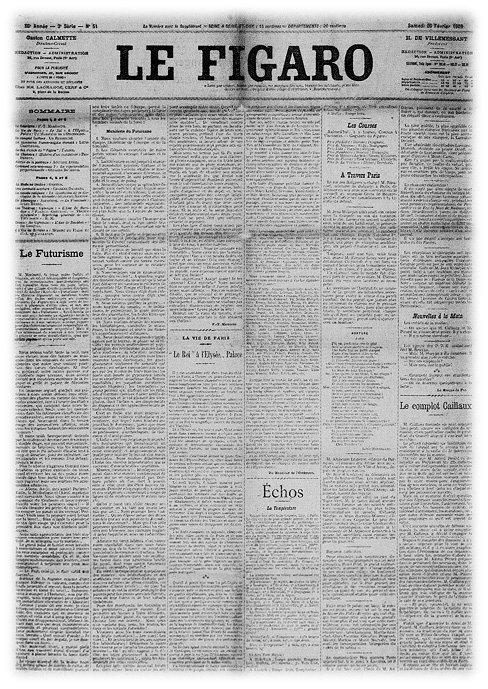
Front page of Le Figaro.

